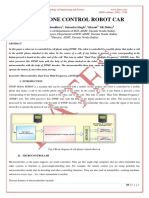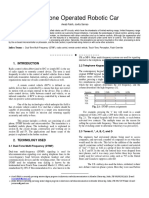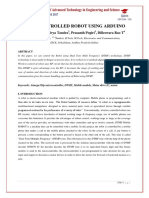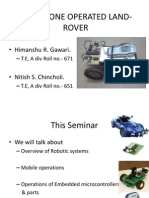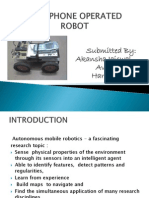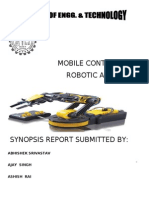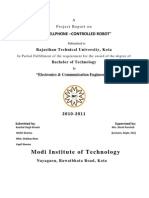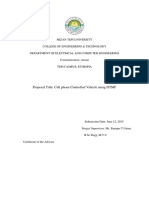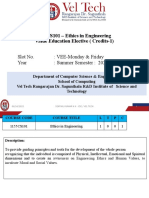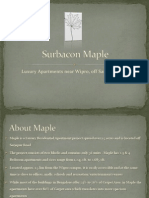0% found this document useful (0 votes)
49 views37 pagesDUV PROJECTppt
The document presents a project on a wireless-controlled vehicle using mobile phone technology, which addresses limitations of traditional RF-controlled robots. It describes the use of DTMF tones for control, processed by a microcontroller to drive motors, and outlines the components involved, including a DTMF decoder and various sensors. The project offers advantages such as extended range and robust control, while also noting potential drawbacks like cell phone costs and battery life.
Uploaded by
Animesh SharmaCopyright
© © All Rights Reserved
We take content rights seriously. If you suspect this is your content, claim it here.
Available Formats
Download as PPTX, PDF, TXT or read online on Scribd
0% found this document useful (0 votes)
49 views37 pagesDUV PROJECTppt
The document presents a project on a wireless-controlled vehicle using mobile phone technology, which addresses limitations of traditional RF-controlled robots. It describes the use of DTMF tones for control, processed by a microcontroller to drive motors, and outlines the components involved, including a DTMF decoder and various sensors. The project offers advantages such as extended range and robust control, while also noting potential drawbacks like cell phone costs and battery life.
Uploaded by
Animesh SharmaCopyright
© © All Rights Reserved
We take content rights seriously. If you suspect this is your content, claim it here.
Available Formats
Download as PPTX, PDF, TXT or read online on Scribd
/ 37







